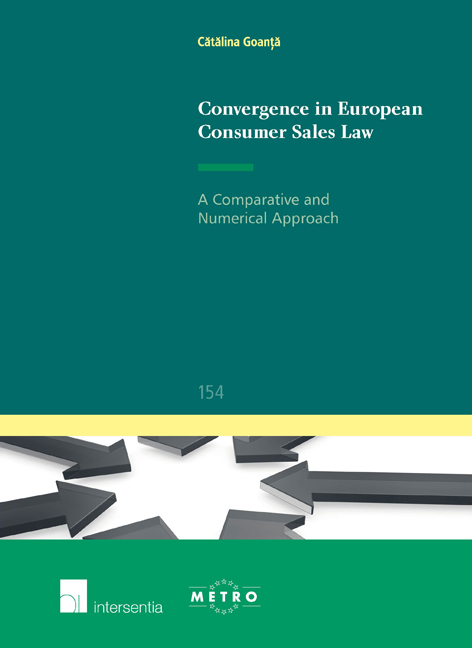Book contents
- Frontmatter
- Dedication
- Acknowledgements
- Contents
- List of Abbreviations
- List of Tables and Figures
- Chapter 1 Introduction
- Chapter 2 The Substantive Comparison
- Chapter 3 The Numerical Analysis
- Chapter 4 Conclusions and Recommendations
- Summary
- Valorisation Addendum
- Relevant Documents
- Bibliography
- Other Literature
- Curriculum Vitae
- Ius Commune Europaeum
Chapter 2 - The Substantive Comparison
Published online by Cambridge University Press: 13 December 2017
- Frontmatter
- Dedication
- Acknowledgements
- Contents
- List of Abbreviations
- List of Tables and Figures
- Chapter 1 Introduction
- Chapter 2 The Substantive Comparison
- Chapter 3 The Numerical Analysis
- Chapter 4 Conclusions and Recommendations
- Summary
- Valorisation Addendum
- Relevant Documents
- Bibliography
- Other Literature
- Curriculum Vitae
- Ius Commune Europaeum
Summary
Introduction and Aim of the Chapter
As mentioned above in the methodological discussion, harmonisation in European consumer sales law is firstly addressed using a substantive comparison. In doing so, the five selected directives are discussed in the light of four questions. To remind the reader, these questions touched upon:
(i) the rationale and scope of the directive;
(ii) the standard of harmonisation set by the European legislator;
(iii) the reception of the standard of harmonisation; and
(iv) comparative notes on the transposition.
The reason why these criteria were chosen is three-fold. Firstly, discussing what the directives were designed to achieve, and more importantly how (criteria i and ii), is useful in recreating the policy developments envisioned by the European legislator. Secondly, by understanding how Member States have transposed European rules, the success and/or shortcomings of national alignment to these policy developments can be evaluated (criterion iii). Lastly, the comparative notes on the transposition (criterion iv) help determine which policy objectives were achieved and which weaknesses were identified in the process.
This Chapter aims to familiarise the reader with the rules applicable to distance selling, doorstep selling, unfair contract terms, consumer sales and unfair commercial practices, both on a European level and a national one, in the light of the overall convergence theme. The five directives are discussed in chronological order, and the four criteria above are then applied to each individual directive. The Chapter thus focuses on comparing national laws – and it does so under the comparative notes – but finally the directives are also compared in a discussion relating to an eventual overlap between their provisions. What is more, the substantive comparison is not only a self-standing methodological perspective, as mentioned in Chapter 1, but it also constitutes the basis of the numerical analysis in Chapter 3 as is seen later.
Two main points need to be taken into account when looking at the structure of this Chapter. Firstly, instead of discussing directives as a whole, the Chapter focuses on selected provisions from each of the five directives. This is because while the rationale and scope of the directives can be easily addressed altogether, not the same can be said about the said directives’ transposition. Works such as the Consumer Law Compendium database have successfully focused on outlining, article-by-article, the performance of national legislation in accommodating consumer contract directives.
- Type
- Chapter
- Information
- Convergence in European Consumer Sales LawA Comparative and Numerical Approach, pp. 41 - 160Publisher: IntersentiaPrint publication year: 2016



